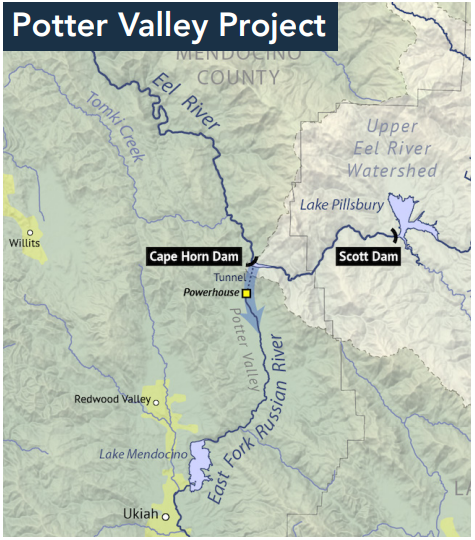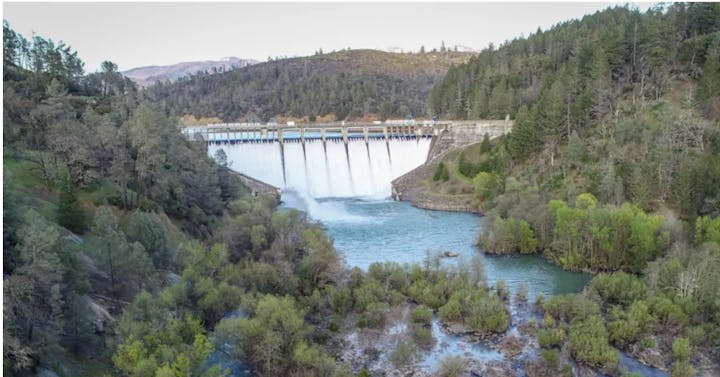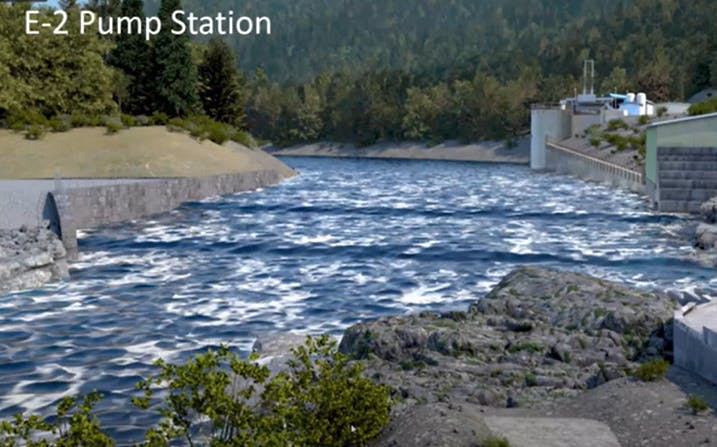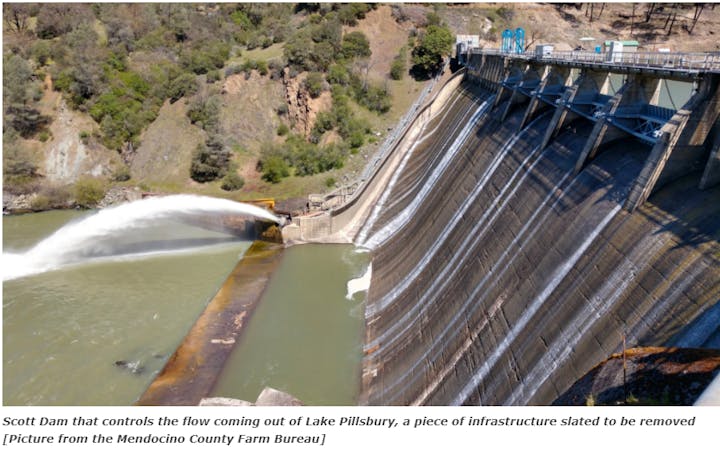Potter Valley Project: A Northern California Trans-basin Diversion
The Potter Valley Project is an trans-basin diversion from the Eel River to the Russian River. Included in the operation are two Eel River dams (Scott Dam and Cape Horn Dam), as well as a powerhouse and water diversion facilities.
The name “Potter Valley Project” has long been used to describe the hydropower generation facilities because this is where they are physically located. However, a more accurate name might be the Northern California Water Project since the water supplied by the Potter Valley Project is used by more than 600,000 people downstream of Potter Valley for beneficial uses in Mendocino, Sonoma and Marin Counties.

The uppermost project work is Scott Dam, which impounds Lake Pillsbury on the Eel River. Scott Dam has no fish passage. Below Scott Dam, the Eel River flows 12 miles into Van Arsdale Reservoir, impounded by Cape Horn Dam, also a project work. Cape Horn Dam has upstream and downstream fish passage facilities, enabling
salmonid species to use the reach between Cape Horn and Scott Dams.
At the Van Arsdale Reservoir, water is either released from or spilled over Cape Horn Dam, from which it then flows northwest in the Eel River, or is conveyed south by tunnel and penstock to the Potter Valley Powerhouse. Water discharged from the powerhouse is released into the East Branch Russian River, which flows into the mainstem Russian River. Both the Eel River and Russian River flow to the Pacific Ocean. The project’s watershed is the source of most of the water in the East Branch Russian River. The U.S. Army Corps of Engineers’ (Corps) Coyote Dam and its impoundment, Lake Mendocino, which provides water for municipal, irrigation, and recreational uses, is approximately 15 miles downstream of the Potter Valley Powerhouse on the Russian River.





